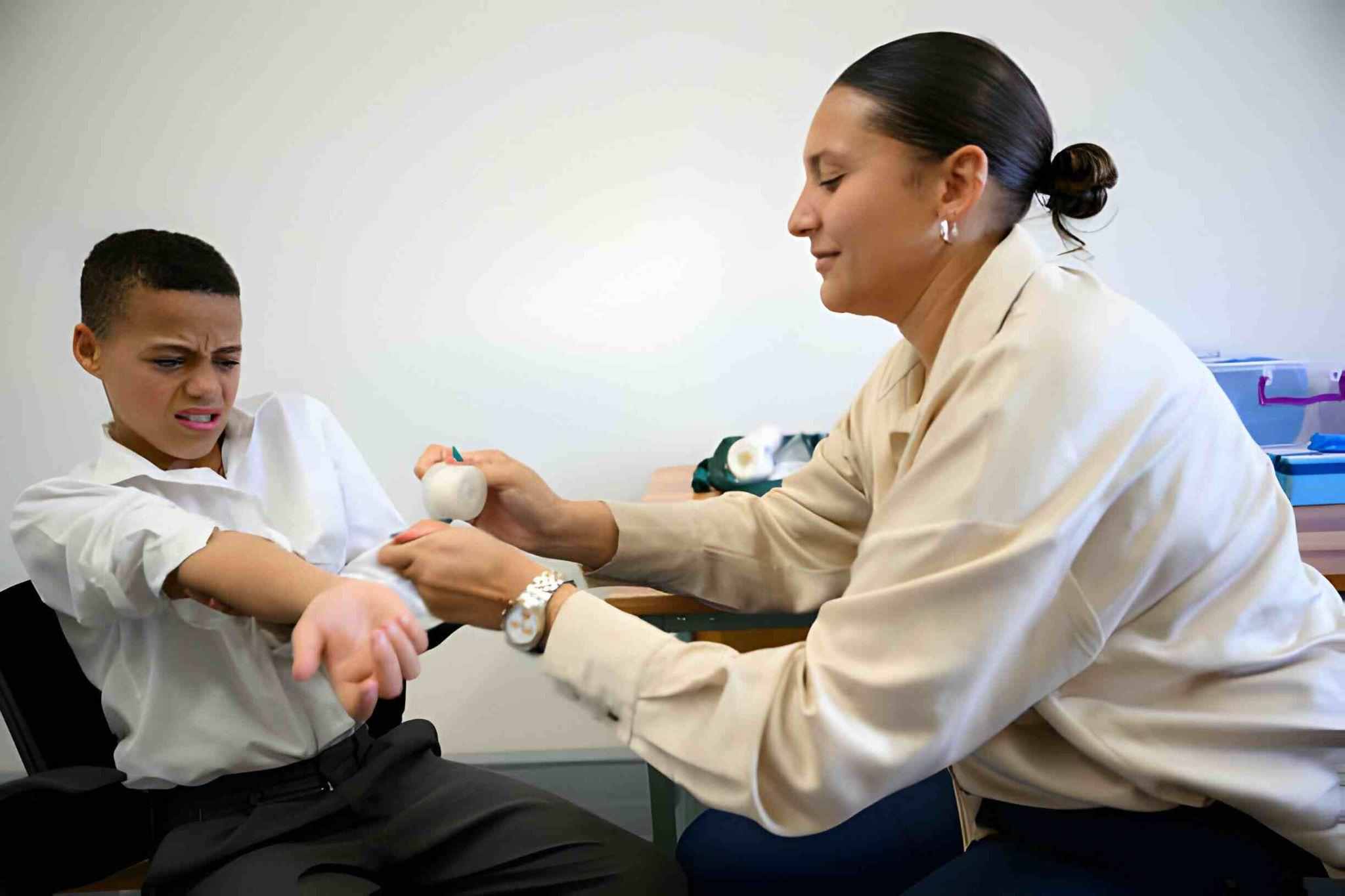As students navigate the demands of their journey minor health issues can pose significant obstacles. Whether it’s a cold, a throbbing headache or an upset stomach these ailments have the potential to disrupt focus and hinder performance.
Equipping students with the knowledge and skills to effectively manage and overcome these health concerns not only promotes their personal well being but also creates an environment conducive to learning. This article explores strategies that empower students to comprehend, handle and conquer ailments.
Understanding Common Minor Health Concerns
In the intricate tapestry of our lives, minor health concerns can occasionally emerge as subtle disruptions, reminding us of the delicate balance our bodies maintain.
- Distinguishing between a cold and the flu is crucial for students. By understanding the signs, symptoms, and triggers that may indicate the need for medical professional intervention, individuals can navigate their mental health journey with informed decision-making.
- When it comes to headaches and migraines identifying triggers and differentiating between types empowers students to implement measures and choose treatment options. This knowledge proves valuable during exam periods. When faced with tight deadlines.
- Addressing issues, like indigestion or acid reflux involves understanding triggers as well as making lifestyle changes. Students can benefit from comprehending how stress levels and irregular eating habits contribute to these ailments.
Crafting a Student-Friendly Aid Kit for Academic Wellness
The academic journey is a dynamic expedition filled with intellectual growth, social exploration, and the occasional unexpected challenge. To navigate this terrain with resilience and focus, students often find themselves in need of more than just textbooks and notebooks.
- Prescription Medications: Including essential non prescription medications, like pain relievers, decongestants and antacids ensures quick access to relief. It’s important to educate students about the dosage and possible interactions with medications.
- Fever Reducers: Monitoring body temperature is crucial when dealing with illness. Having a thermometer and fever reducing medications available helps in promptly managing fevers.

- Hydration and Electrolyte Solutions: Staying hydrated is vital for recovery. Including rehydration solutions in the first aid kit helps replenish lost electrolytes during illness aiding in recovery.
- Basic First Aid Supplies: Bandages, antiseptic wipes and adhesive tapes are essential for injuries. Students should familiarize themselves with aid procedures to effectively address cuts, bruises or minor burns.
Self-Care Strategies for Minor Ailments
This section delves into the realm of self-care, acknowledging that for many minor ailments, proactive and holistic strategies can be both accessible and effective.
- Rest: Stress and lack of sleep can worsen ailments. Understanding the importance of getting rest allows students to prioritize self-care and recuperation.
- Healthy Eating Habits: A balanced diet is fundamental for health. Educating students about the role of nutrition, in strengthening the system and promoting well-being is crucial.
- Methods for Managing Stress: Long term stress can weaken the system making individuals more vulnerable to illnesses. Teaching students stress management techniques, such as mindfulness and relaxation exercises contributes to their physical and mental well-being.
Importance of Regular Physical Activity
Engaging in exercise offers health benefits, including support for the immune system. Encouraging students to incorporate activity into their routines can help prevent and alleviate minor ailments treatment.
- Awareness of Telemedicine Services: Informing students about the availability of telemedicine services on campus allows them to seek advice without having to leave their residences. This is especially helpful for addressing ailments that do not require an in person visit.
- Accessing Campus Health Centers: Making sure students are familiar with the resources provided by campus health centers ensures they know where to go for assistance. Check ups and timely consultations can help prevent issues from escalating.
Integrating Health Education into the Curriculum
Recognizing the profound impact of health on academic performance and overall life satisfaction, there is a growing movement towards integrating health education into the curriculum.
- Conducting Workshops and Seminars: Educational programs and seminars, on campus gives students opportunities to delve deeper into health related subjects. Interactive sessions promote a sense of community. Encourage discussions about well being.

- Peer to Peer Programs: Implementing peer led initiatives where experienced students offer guidance to their peers on health related topics fosters a network. Peers can share tips and advice based on their experiences.
- Strategies for Time Management: Teaching effective time management techniques helps students find a balance between responsibilities and self care. Proper planning enables learning while maintaining health.
Creating Healthy Study Environments
Encouraging students to establish study environments, which include furniture, suitable lighting and regular breaks contributes to overall well being and reduces the risk of health issues associated with prolonged study sessions.
Open Channels of Communication
Cultivating an environment where students feel comfortable discussing health concerns ensures that any issues are promptly addressed. Establishing communication channels with faculty members and support staff promotes an approach to student well being.
Addressing Mental Health Concurrently
As we navigate through this guide, we will unravel the symbiotic relationship between mental and physical health, recognizing that each significantly influences the other.
- Recognizing the Connection Between Mind and Body: Highlighting the interdependence of physical health helps students comprehend how one impacts the other. Effectively managing stress levels and addressing health concerns contribute to an overall sense of well being.
- Accessing Counseling Services: It is crucial to ensure that students are aware of and comfortable with accessing counseling services on campus. These services provide support for managing stress, anxiety and other mental health concerns.

- Promoting a Comprehensive Approach: Incorporating discussions about health into programs emphasizes the importance of taking a holistic approach to student well-being. This approach recognizes that both physical and mental health is components of well-being.
Conclusion
Empowering students with the knowledge and skills to handle ailments is an investment in their success and overall well being.
By understanding health issues, creating a student friendly first aid kit, embracing self care strategies, utilizing available healthcare services and balancing academic and health priorities, students can effectively navigate the challenges posed by minor health problems.
A comprehensive approach that considers both physical and mental well being fosters an environment where students can excel academically while prioritizing their wellness.



